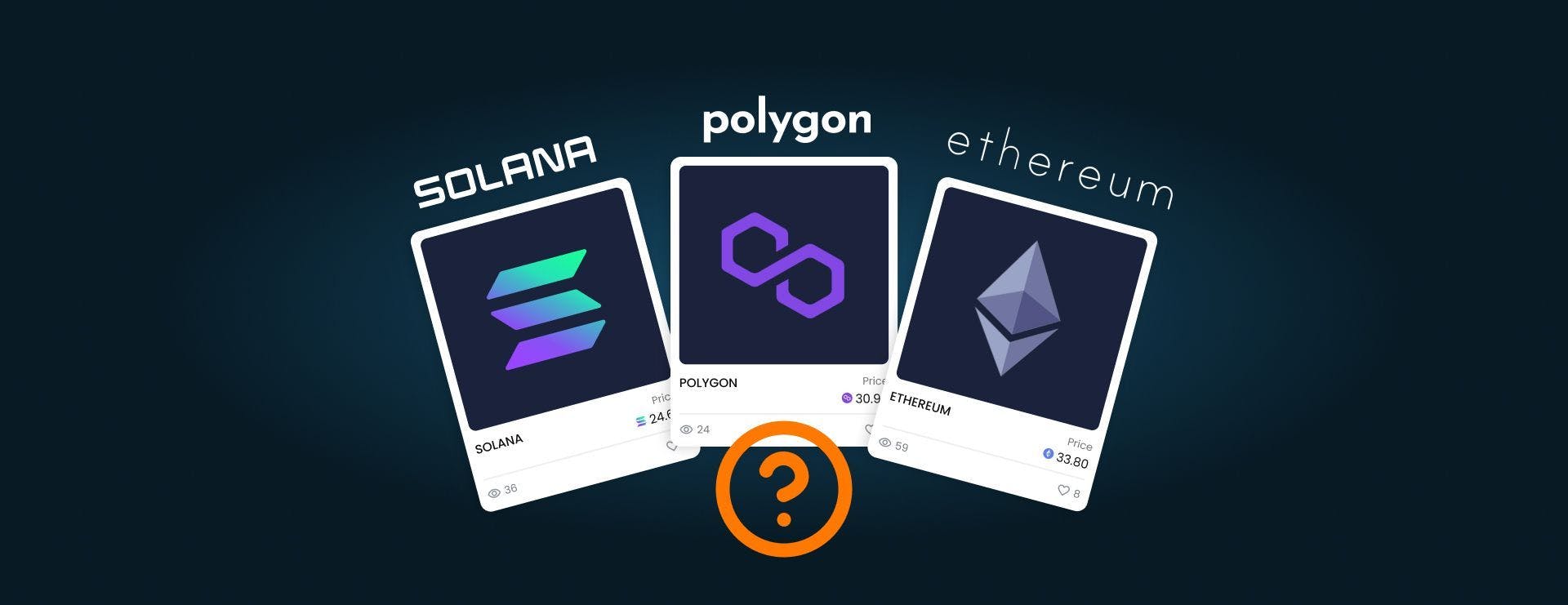The first documented case of cryptocurrency theft happened in 2011 when hackers took more than 25,000 bitcoins from an online exchange platform's digital wallet. Although 2023 has just begun, hackers have already stolen $119 million in cryptocurrencies through 19 breaches, according to a recent report by Crystal Blockchain. The report encompasses data from the infamous 2011 Mt. Gox crypto exchange hack up until February 18, 2023.
Cryptocurrency users need to take vulnerability management seriously, especially crypto vulnerability management. The consequences of a lack of knowledge on this topic can be disastrous. If you want to learn more about the consequences of not addressing vulnerabilities, best practices for secure smart contract development, as well as about the possible security threats keep reading. Also, we are going to explain how to monitor and detect vulnerabilities, how to respond to vulnerabilities, and the ways to create a security-conscious developer community.
Importance of Security in the World of Smart Contracts
When talking about crypto vulnerability management, developers need to be aware and understand these common types of crypto vulnerabilities and potential security threats during the development and testing phases of their contracts, to be able to take measures to reduce the possibility of hacker break-ins. The most common types of vulnerabilities of smart contracts are reentrancy attacks, overflow and underflow errors, and access control issues.
Reentrancy Attacks
Reentrancy attacks happen when a smart contract contacts an external contract and allows it to execute the code before the initial contract has completed its execution. An attacker can exploit this vulnerability to repeatedly call the external contract and drain funds from the original contract.
Overflow and Underflow Errors
This vulnerability occurs when an operation either overflows or underflows beyond the maximum or minimum size that is allowed for the data type. This leads to unintended behavior in the contract.
Access Control Issues
This vulnerability takes place when a contract fails to properly restrict access to certain functions and data, allowing an attacker to perform unauthorized actions or access sensitive or classified information.
Real-World Examples of a Smart Contract Breach
When talking about possible attack vectors and different vulnerabilities of smart contracts, we need to mention some real-world examples of that.
In June 2016, the DAO, a decentralized venture capital fund on Ethereum, suffered a $50 million hack due to a vulnerability in its smart contract. The "splitDAO" function was exploited using a recursive call, allowing the hacker to repeatedly drain Ether without updating the token balance. This led to a hard fork in Ethereum, creating Ethereum Classic (ETC) as a separate cryptocurrency.
In July 2017, Parity Technologies' Ethereum wallet suffered a $30 million loss due to a smart contract vulnerability. The unprotected "initWallet" function in the multi-signature wallet contract allowed the attacker to gain ownership and execute the "kill" function to drain Ether. The breach led to frozen funds in affected wallets and prompted security enhancements by Parity Technologies.
In August 2021, Poly Network, a decentralized finance platform, suffered a $600 million hack due to a vulnerability in its cross-chain interoperability function. The issue affected the verification of transactions across different blockchains. Following the breach, the team addressed the vulnerability, enhanced security, and collaborated with external partners to audit their smart contracts to prevent future incidents.
The largest exploit in 2022 occurred on March 23, when the Ronin bridge, an Ethereum sidechain for Axie Infinity NFT game, was hacked for approximately $612 million in ETH and USD Coin. The hackers accessed private keys, compromised validator nodes, and approved transactions to drain funds. The U.S. Treasury Department updated its SDN list on April 14, suggesting the possibility that Lazarus Group was responsible. This hack is the largest cryptocurrency exploit in history.
These incidents highlight the importance of thoroughly auditing and securing smart contract code to prevent similar vulnerabilities from being exploited by malicious actors.
The Consequences of Not Addressing Vulnerabilities
Ignoring smart contract vulnerabilities can have severe outcomes, including financial losses for users. The possible consequences are:
Financial Losses
If vulnerabilities allow attackers to exploit the smart contract, the users of the contract can suffer significant financial losses.
Damage To Reputation
A breach can damage the reputation of the developer or company responsible for the contract. This can lead to a loss of trust among users and investors, making it more difficult for the developer or company to raise funds or launch new projects in the future.
Legal Liability
In some cases, smart contract breaches can lead to legal liability for the developer or company responsible for the contract. If users suffer financial losses as a result of a breach, they may pursue legal action against the developer or company to recover their losses.
Best Practices for Secure Smart Contract Development
Best practices for secure smart contract development are keeping code simple and modular, using established patterns and libraries, avoiding common pitfalls, having regular security audits, testing with automated tools, and fostering a security-first mindset within the team.
Writing Secure Code
Keeping Code Simple and Modular
Developers should strive to keep smart contract code simple and modular, making it easier to understand, maintain and audit the code, which is essential for finding and fixing security vulnerabilities. Simple code is also less likely to contain errors that could be exploited by attackers.
Using Established Patterns and Libraries
You should use established patterns and libraries whenever possible, as they have been extensively tested and are less likely to contain security vulnerabilities. Doing that will save time and effort and improve the overall security of the smart contract.
Avoid Common Pitfalls
Developers need to avoid common pitfalls such as integer overflow and underflow, reentrancy attacks, and race conditions since they can lead to the loss of funds or data breaches.
Regular Security Audits
Regular security audits are essential for identifying and fixing security vulnerabilities in smart contract code, and a third-party security firm should engage and perform a thorough security audit of their smart contract code.
Testing With Automated Tools
Testing is a crucial part of development. Developers should use automated tools, including AI tools such as ChatGPT 4, to test their code and identify potential security vulnerabilities.
Fostering a Security-First Mindset Within the Team
Developers should foster a security-first mindset within the development team, thus prioritizing security in the development process, from the initial design phase to the final release of the smart contract.
Monitoring and Detecting Vulnerabilities
It's crucial to keep an eye on vulnerabilities and detect any potential threats to ensure security. To do this, you can regularly scan and monitor your smart contracts, use security tools and platforms, and always stay up-to-date with the latest information. Continuous learning is key!
Regularly Scanning and Monitoring Smart Contracts
Perform a thorough security audit prior to deploying a smart contract to detect potential vulnerabilities in its code and architecture. Monitor the blockchain regularly for any suspicious activity or unexpected behavior. Utilize blockchain explorers to track transactions and events connected to your smart contract.
Leveraging Security Tools and Platforms
The use of security tools and platforms like formal verification, static analysis, and dynamic analysis can be effective in recognizing and resolving security vulnerabilities in computer systems and software.
Static Analysis Tools
When it comes to identifying possible security vulnerabilities in software, developers use static analysis tools to scrutinize the source code or compiled binary code. These tools not only flag coding practices that disregard established security best practices (like using weak passwords, embedding cryptographic keys, or neglecting user input validation) but also help enforce good security.
Dynamic Analysis Tools
Dynamic analysis tools inspect software while it's operating to find security weaknesses that may not be visible in the source code. They use methods like fuzzing, injection testing, and penetration testing to imitate attacks and reveal vulnerabilities in the system.
Formal Verification Tools
Formal verification tools can mathematically prove that software meets specific security and correctness requirements. They rely on formal methods, such as model checking and theorem proving, to exhaustively analyze the behavior of software and identify potential security vulnerabilities.
Emphasizing Continuous Learning and Staying Up-To-Date
The blockchain and smart contract ecosystem is continuously evolving, and new vulnerabilities are being discovered. Staying up to date with the latest security best practices and vulnerabilities can help you detect and prevent potential attacks.
Also, collaborating with other developers and security experts can help you identify potential vulnerabilities in your smart contract. Peer review is an effective way to catch potential issues that may have been missed during the development process.
Responding to Vulnerabilities
Smart contracts need a different approach to handle vulnerabilities. Two key ways to respond to vulnerabilities are developing an incident response plan and handling vulnerability disclosure.
Developing an Incident Response Plan
The incident response plan for smart contracts should include identifying roles and responsibilities and creating a communication strategy.
- Identifying roles and responsibilities
Make sure your incident response team knows who is responsible for responding to vulnerabilities, communicating with stakeholders, and making responsible decisions.
- Creating a communication strategy
To address the vulnerability, establish a communication strategy that determines who will communicate with stakeholders, what information will be shared, and how often updates will be given to ensure everyone is informed.
Handling Vulnerability Disclosure
When it comes to handling vulnerability disclosure, a few additional considerations for smart contracts are encouraging responsible disclosure, offering bug bounties and incentives and learning from past incidents, and improving security practices.
- Encouraging responsible disclosure
Encourage people who find vulnerabilities in your smart contracts to report them responsibly by providing clear guidelines and a secure channel.
- Offering bug bounties and incentives
Providing bug bounties and incentives can motivate researchers to report vulnerabilities, speed up their detection, and guarantee timely resolution before exploitation occurs.
- Learning from past incidents and improving security practices
Learn from past incidents to improve security practices by analyzing vulnerabilities, identifying areas for improvement, and implementing changes to prevent future incidents.
Creating a Security-Conscious Developer Community
Creating a security-conscious developer community is essential for the long-term security and success of smart contracts. The steps for creating a security-conscious developer community are participating in security forums and discussions, sharing knowledge and experiences with peers, and encouraging collaboration and open-source contributions.
Participating in Security Forums and Discussions
You can host workshops, webinars, or training sessions to educate developers on smart contract security best practices and cover topics such as common vulnerabilities, secure coding practices, and how to conduct security audits.
Sharing Knowledge and Experiences With Peers
Encourage transparency among developers about security vulnerabilities and challenges faced during smart contract development.
Encouraging Collaboration
Encourage collaboration and peer review among developers to identify potential vulnerabilities before deploying smart contracts on the blockchain.
Conclusion
To effectively handle potential security issues in cryptocurrencies, developers of smart contracts should employ various approaches such as conducting security audits, utilizing automation tools, and engaging in collaborative efforts, the implementation of which can enhance the safety and dependability of their applications, thereby supporting the long-term prosperity of the blockchain industry.




